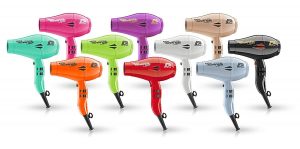Have you ever been doing something you have done countless times before and it suddenly hits you. How does this actually work?. Sometimes we do stuff in our routines on auto pilot and never give it a second thought. It happened to me recently when i came out the shower and was drying my hair. How can something as small as a hairdryer suddenly produce powerful warm air from seemingly nothing?. Guess the only way i would find out is to dive right in.
Beginnings
The first use of hot air to dry hair was invented by a French stylist named Alexander Goedfroy in 1890. Customers had to sit on a chair with a bonnet on their heads. The bonnet was attached to a pipe that came from a heating stove. At some point in the 1920s the first actual handheld “blow dryer” was released to consumers who could finally dry their hair in the comfort of their own home.
Compared to the hairdryers we are all used to these days these things were pretty awful. Weighing nearly 1kg, they were heavy and clunky. The maximum power they could output was 100 watts. When you consider some of the current hairdryers we have reviewed on this very site go up to over 2000 watts, you can imagine how long it must have taken to dry your hair.
Worse still was the hundreds of deaths they caused each year by people dropping them in water resulting in electrocution. Regulatory guidelines were brought into force during the 1970s to ensure safer standards. Then in the 1990s the law made it mandatory that all hairdryers must come with a ground fault circuit interrupter. This was a safety mechanism that cut off the power as soon as it became wet to avoid electrocution. Since the 2000s the average death count by hair dryer related issues is down to four.
The Technical Stuff
When you look at the market today there are so many different designs but the truth is the core of how a hairdryer works has hardly changed. They rely on 2 main parts:
- A motor driven fan
- A heating element
Both these elements work together to transform electric energy into convective heat. Lets break it down step by step for simplicity:
- When you first plug your hairdryer into a power socket and switch it to on, a current starts to flow through it.
- This current then goes to a circuit that starts heating up the heating element. This is very similar to the heating elements you can visually see when you start a toaster.
- The current also starts the motorised fan.
- The airflow generated by this fan then pushes the air through the heating element and by the time it comes out the end of the nozzle it is warm.
Other Parts
So if a hairdryer mostly runs on 2 main parts, what are all the other parts doing in there?. In all honesty most of the other parts are safety related. The front grill on the end of the barrel was put there so kids could not put their fingers inside and get injured from the heating element. They also include a thermal fuse that is basically a safety feature that will cut the hairdryer off if it malfunctions. The barrel section is also lined inside with insulation. If this was not here then you would roast your hand off the plastic after use.
When the hairdryer is in use the motorise fan is pulling in air. For safety they have also included wire screens that prevent anything else being sucked in. If you look at your hairdryer side vents you can see build up that is collecting on these wire screens. If they were not there, this build up would get inside the heating element and break it eventually. Make sure you clean them regularly.




